Could the U.S. Military Help Battle the Coronavirus?
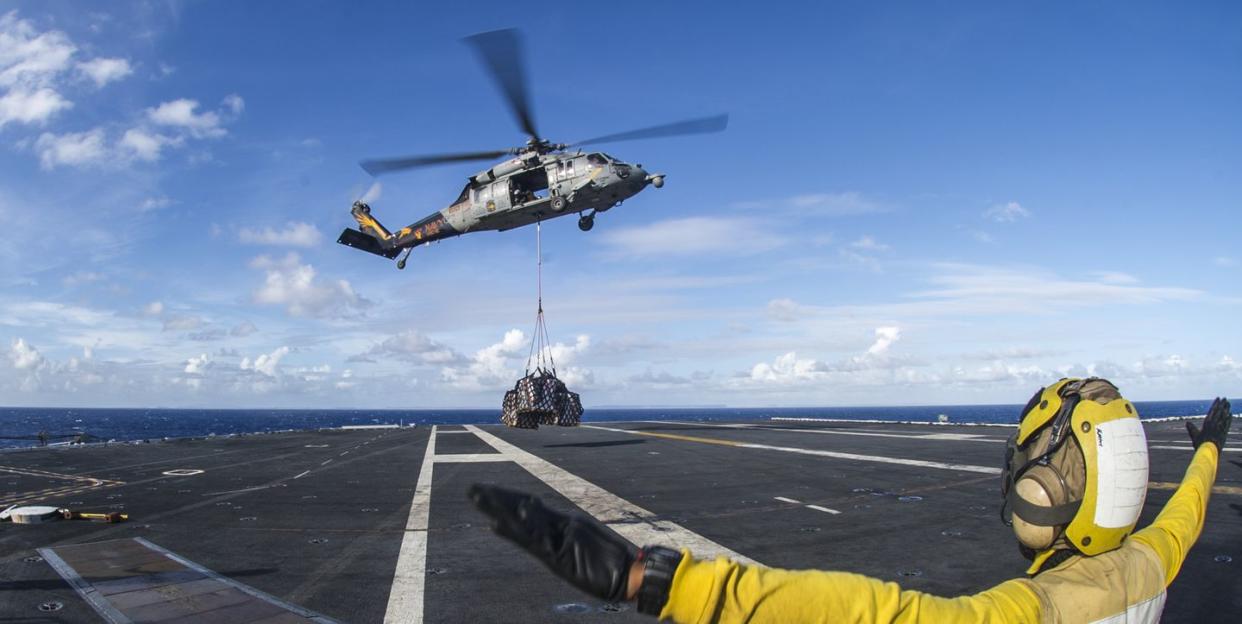
The rapid spread of the Wuhan Coronavirus, while not particularly threatening outside China, could involve the Pentagon.
The U.S. military can operate within the U.S. only under certain conditions.
The Pentagon is designed to fight wars abroad, a mission that lends itself to quickly responding to public health emergencies, both at home and abroad.
The World Health Organization’s declaration that the coronavirus represents a “global emergency” highlights the growing danger the virus poses to public health. Relatively few cases of the disease have been reported in the U.S., but if the number increases by a significant margin, the U.S. military has substantial medical and logistical assets it could throw at the crisis. From hospital ships to heavy lift transport, the Pentagon can help civilian authorities respond to a medical emergency—both here and abroad.
The World Health Organization, addressing a news conference from its headquarters in Geneva, declared the coronavirus a “Public Health Emergency of International Concern.” The issuance of the emergency is meant to underscore the seriousness of the situation, and comes with a series of recommendations for countries reporting cases of the virus. At the same time the State Department has issued a Level 4 “do not travel” advisory for China, warning Americans to postpone travel to the country until it is safe to do so. Nearly 10,000 cases of the virus have been reported worldwide, the vast majority in China, with 213 deaths.
As of today the U.S. has seen only six cases, none of them fatal.
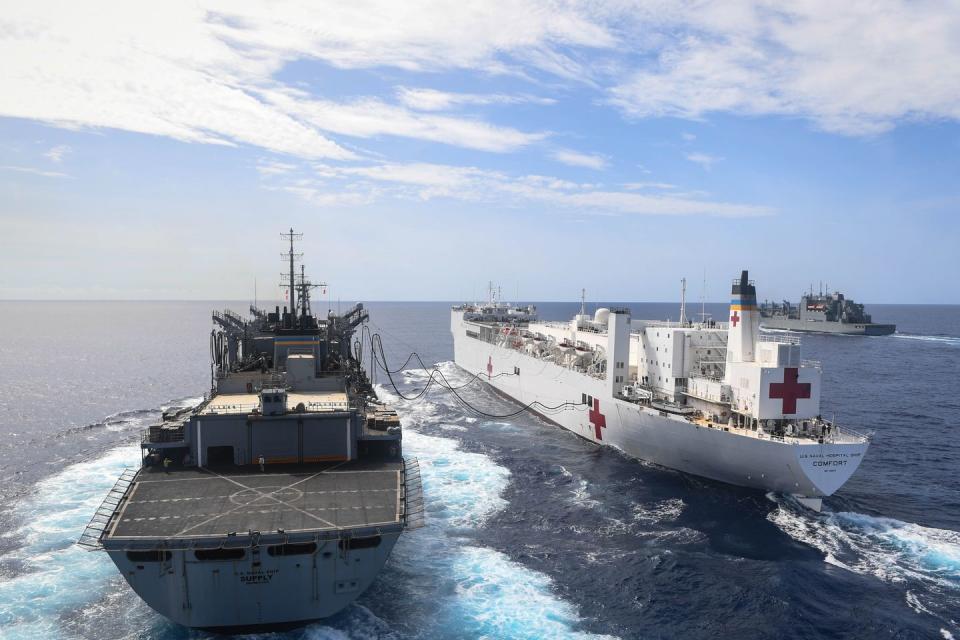
But if an outbreak were to occur in the U.S.—whether the Wuhan coronavirus or some other disease—what kind of medical and logistic resources could the U.S. military marshal? Quite a lot, actually. The same war machine that can move entire armies, fleets of warships, and swarms of warplanes can just as easily move large numbers of personnel and supplies within U.S. borders or abroad.
The use of the U.S. military within American borders is a tricky exercise. Due to an aversion to the domestic use of armed troops reaching back to the Revolutionary War, the military can by law only perform certain missions. Active duty troops are generally prohibited from law enforcement missions, such as quelling riots or protecting medical facilities. Policing missions would typically go to National Guard units not federalized and under state control.
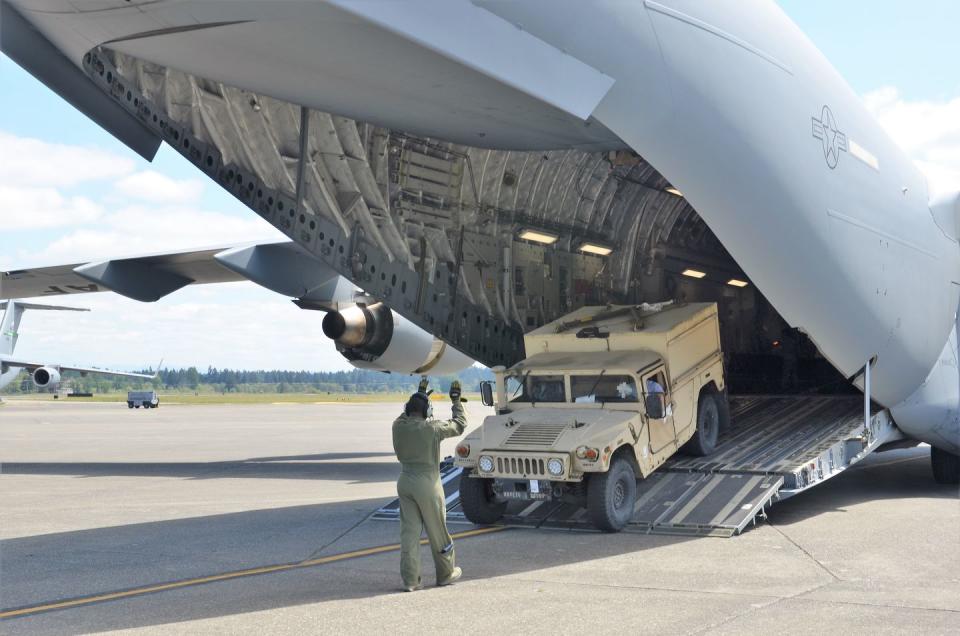
Other missions, including transportation, search and rescue, and medical support could be undertaken without legal restriction. The Air Force’s C-5M Super Galaxy, C-17 Globemaster III, and C-130J Super Hercules transports can move huge amounts of supplies by air. The C-5M, for example, can carry 120,000 pounds of cargo from Japan to California without midair refueling—and shuttle up to 281,000 pounds within the continental U.S. Medical personnel, medical supplies, food, temporary housing, and other relief supplies could be moved quickly and in large numbers.
Meanwhile, the U.S. Navy has substantial medical assets. Most large ships, including aircraft carriers and amphibious assault ships, have extensive medical facilities, including operating rooms, recovery rooms, x-ray machines, and other equipment. The service’s Naval Construction Battalions, or Seabees, could support any medical emergency by constructing emergency shelters or temporary medical facilities, and enlarging ports for the receipt of supplies.
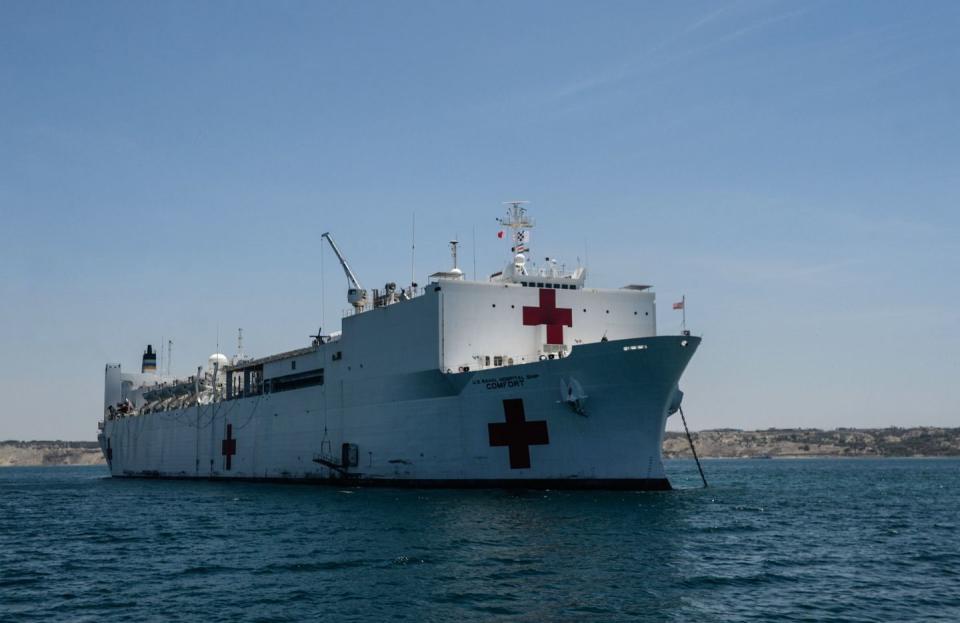
Finally, the Navy has two hospital ships, USNS Mercy and USNS Comfort. The Navy describes each ship as having:
“...12 fully-equipped operating rooms, a 1,000 bed hospital facility, digital radiological services, a medical laboratory, a pharmacy, an optometry lab, a CAT-scan and two oxygen producing plants. Each ship is equipped with a helicopter deck capable of landing large military helicopters. The ships also have side ports to take on patients at sea. When fully operational, the hospital ships have a crew of about 71 civilians and up to 1,200 Navy medical and communications personnel.”
Finally, the U.S. Army and U.S. Marine Corps maintain dedicated units designed to operate in chemical, nuclear, radiological, and most importantly biological environments. The Marines’ Chemical Biological Incident Response Force is a battalion-sized unit based at Indian Head, Maryland. The CBIRF:
“... is prepared to respond, with minimal warning, to a chemical, biological, radiological, nuclear, or high yield explosive (CBRNE) events in order to assist local, state, or federal agencies and the geographic combatant commanders in the conduct of CBRNE response or consequence management operations as part of its Defense Support to Civil Authorities (DSCA) mission. As such, CBIRF Marines and Sailors are skilled in the areas of command and control, agent detection and identification, search, rescue, and decontamination, and emergency medical care for contaminated personnel.”
The CBIRF is a high readiness force capable of deploying quickly to respond to crises. It can deploy one initial response force of 150 personnel within 24 hours, and the second force within 48 hours.
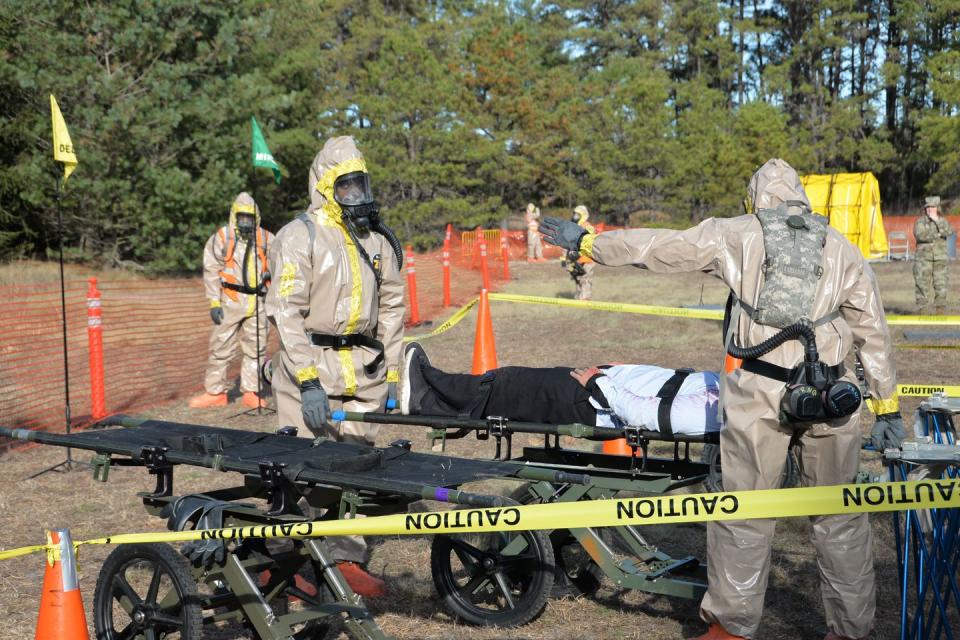
The U.S. Army maintains the 20th CBRNE Command (Chemical, Biological, Radiological, Nuclear and high- yield Explosives or CBRNE. The Brigade concentrates 85 percent of the Army’s Chemical, Biological, Radiological, Nuclear (CBRN) units, or approximately 4,000 personnel, under a single command. A similar unit is the 415th Chemical Brigade, a U.S. Army Reserve unit.
Finally, there's also medical units and personnel within the U.S. military whose mission is to treat personnel in peacetime and wartime, on sprawling bases or battlefields far from home. The U.S. Army alone maintains four active duty and six reserve medical brigades of 7,000 personnel each, while the U.S. Marines have four medical battalions with about a third of the personnel of a brigade. In July 2019, the Pentagon made the decision to trim 18,000 medical personnel from the across the military, in some cases replacing them with contractors. While the details are still apparently being worked out and ultimately may not impact the Department of Defenses's ability to respond to domestic emergencies, 18,000 is a lot of trained personnel that can't respond to a crisis.
The likelihood of this particular coronavirus involving the U.S. military is relatively slim, but a future emergency—a terrorist attack, hurricane, earthquake, volcanic eruption, or another epidemic—could require the U.S. government to call on the Pentagon.
You Might Also Like

